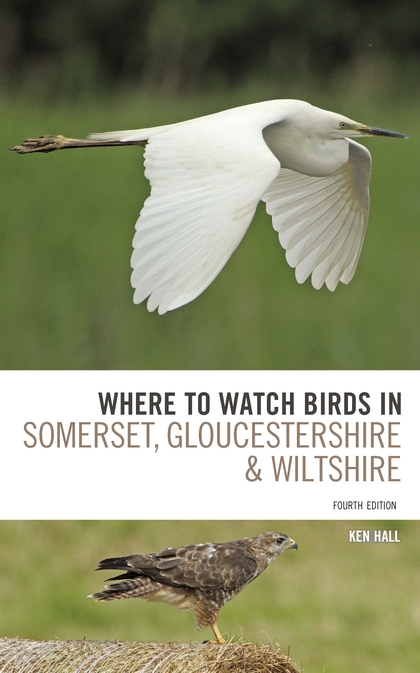Where to Watch Birds in Somerset, Gloucestershire and Wiltshire
- Where to Watch Birds in Somerset, Gloucestershire and Wiltshire by Ken Hall (fourth edition, Christopher Helm, London, 2019).
- 320 pages, black-and-white line drawings and maps.
- ISBN 9781472912381. Pbk, £25.
- Bookshop from £22.99
Britain's birdlife is changing more rapidly than we might imagine; and nowhere more so than in my adopted county of Somerset. When the first edition of Ken Hall's excellent guide was published, more than 30 years ago, Little Egrets hadn't even begun to appear in any numbers in Britain, let alone breed. Eurasian Bitterns were on the edge of extinction, and the only species of heron found in the region was Grey.
Yet today, seven members of the heron family breed on the Avalon Marshes alone. Great Egrets are now the most frequently seen large waterbird, while Western Cattle Egrets are also a regular sight. And while Little Bittern and Black-crowned Night Heron only have a toehold here, Glossy Ibis, Eurasian Spoonbill and the reintroduced Common Cranes add to the list of long-legged waterbirds you can reasonably expect to come across.
The Avalon Marshes is just one of several new sites featured in this book since it was first published; others include the Cotswold Water Park on the borders of Wiltshire and Gloucestershire, and the new Wildfowl and Wetlands Trust reserve at Steart Marshes in west Somerset, home to breeding Avocets and Little Ringed Plovers.
It's not all good news. Visitors to Slimbridge will be well aware that the numbers of wintering Bewick's Swans and Greater White-fronted Geese are well down on years gone by. Formerly widespread breeding species such as Pied Flycatcher, Yellowhammer and especially Common Nightingale are in decline right across the region, while Red and Black Grouse have vanished completely.
But there is still plenty to tempt the resident or visiting birder, and Ken Hall's long experience and wealth of knowledge make him the ideal guide. Many of the 80-plus sites are rightly celebrated for their birdlife, but he includes many that are less well known, yet well worth a visit.


